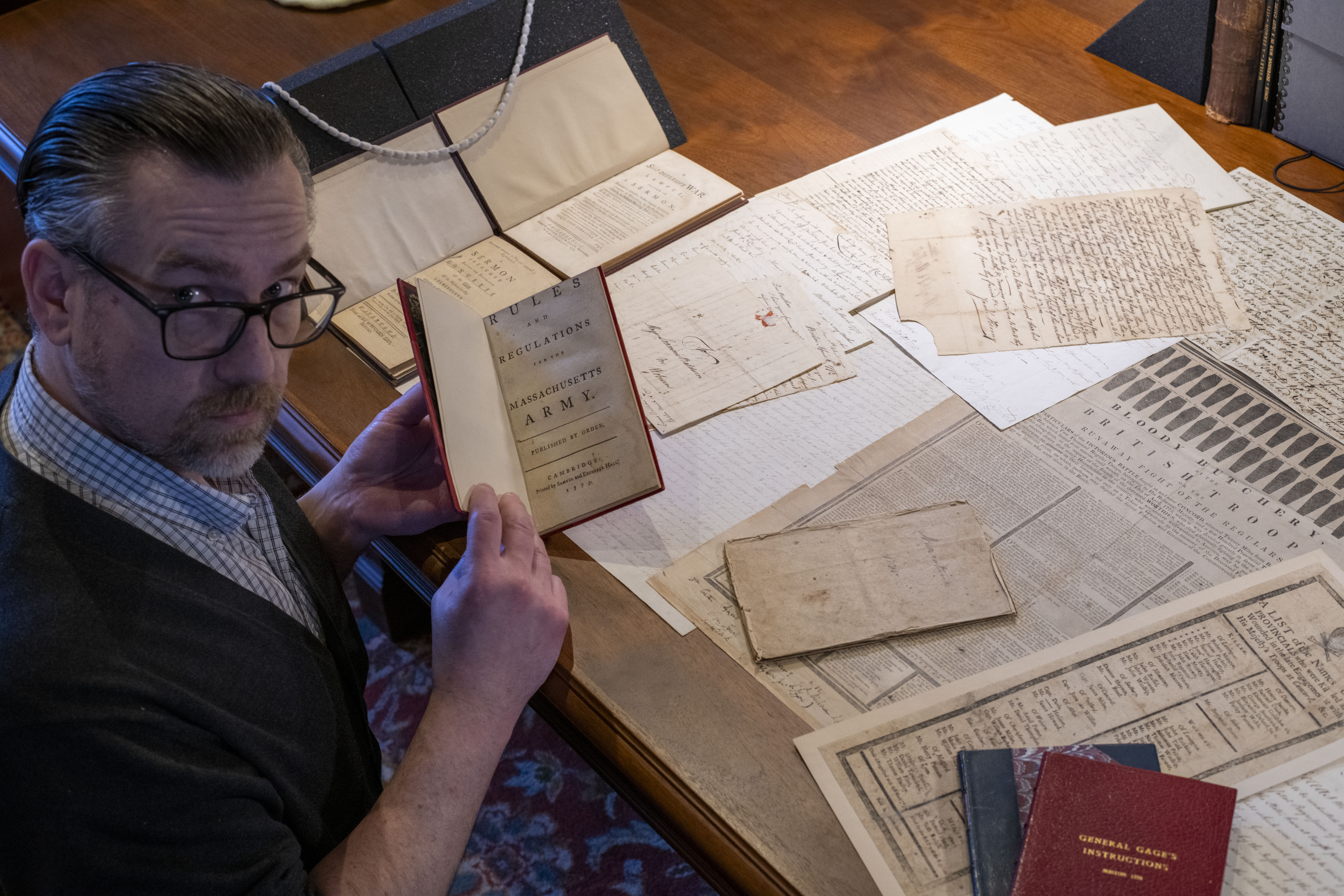Bloody Work: Lexington and Concord 1775
Exhibit Introduction
In the late evening April 18, 1775, General Thomas Gage, Commander of the British Army in North America, ordered a detachment of over 840 elite soldiers to march out of Boston “with the utmost expedition and Secrecy.” Their mission was to travel 17 miles northwest to Concord, Massachusetts, where they were to destroy arms, ammunition, and military supplies stockpiled there by American colonists.
Between 10:00 p.m. and midnight, the British Army officer Lt. Col. Francis Smith led the soldiers across the Charles River to the mainland. Their movements set in motion the American rebels’ prepared communication network, including alarm riders Paul Revere, William Dawes, and Samuel Prescott, to notify the countryside. Over the course of April 19th, as they made their way northward, British troops confronted armed resistance by American Minutemen at Lexington, sparking the first gunfire of the Revolution. At Concord, Lt. Col. Smith’s forces clashed with colonial militiamen and destroyed what remained of the stockpiled military stores.
The return march to Boston was a long, bloody gauntlet for the redcoats, despite the arrival of over 1,000 reinforcements. Increasing numbers of provincial militiamen arrived from distant towns and farms, giving “incessant” fire from behind trees, stone walls, barns, and buildings. By the time the expedition made it back to the safety of the city, some 73 British Army soldiers were dead or dying, 174 were wounded, and dozens were missing. Meanwhile there were 49 dead or dying provincials, 39 wounded, and five missing.
“Bloody Work: Lexington and Concord 1775” explores the early months of 1775 in Massachusetts, the battles of April 19, and their immediate aftermath, giving an account of the events that ignited a nearly eight-year Revolutionary War between the British Empire and its American colonies.
Special thanks to U-M School of Music, Theatre & Dance students Sarah Hartmus and Lleyton Allen for recording the audio transcriptions of the exhibit captions and letter transcriptions.
Thanks to Clements Intern for Instruction and Fellowships James Watke-Stacy for providing audio recordings of the letter transcriptions.


